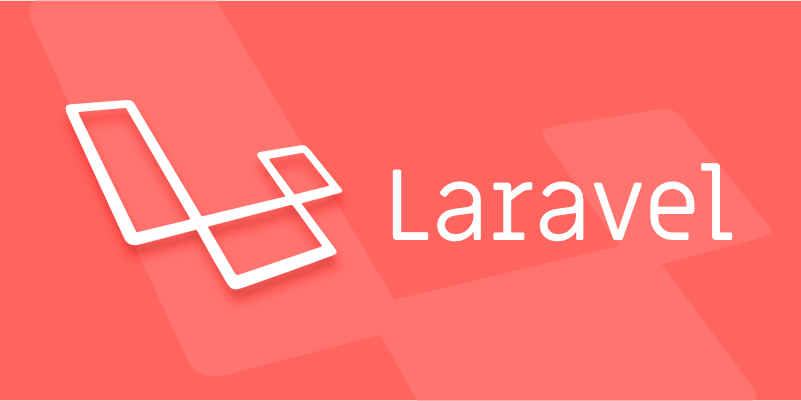Integrating Vite in a Laravel project can be achieved through the following steps: 1. Install Vite and laravel-vite-plugin plug-ins and related dependencies; 2. Create and configure the vite.config.js file, set the entry file and plug-ins; 3. Use the @vite directive to load resources in the Blade template; 4. Use the npm command to start the development server or build production environment resources; 5. Pay attention to path processing and plug-in configuration to support frameworks such as Vue, React, etc. After correct configuration, Vite will greatly improve the front-end build speed and optimize the hot update experience.

Using Vite in Laravel projects can significantly speed up the construction of front-end resources, especially in development mode. Vite's hot updates are very fast and suitable for modern JavaScript development processes. Here are some key steps and suggestions to help you integrate Vite into Laravel smoothly.

Install Vite and related dependencies
Laravel already supports Vite by default. Starting from Laravel 9, the official provides a laravel-vite-plugin plugin to simplify configuration. If you are using an older version, you may need to manually install some dependencies.
npm install vite laravel-vite-plugin --save-dev
In addition, if you plan to use React, Vue, or TypeScript, you also need to install the corresponding plug-in or loader:

- Vue:
@vitejs/plugin-vue - React:
@vitejs/plugin-react - TypeScript:
@vitejs/plugin-typescript
Configure the vite.config.js file
Create a vite.config.js file in the project root directory and introduce the plug-in provided by Laravel. The basic structure is as follows:
import { defineConfig } from 'vite';
import laravel from 'laravel-vite-plugin';
export default defineConfig({
plugins: [
laravel({
input: [
'resources/css/app.css',
'resources/js/app.js'
],
refresh: true,
}),
],
});The key here is to set the entry file (input), usually your main CSS and JS files. You can add multiple entry points based on the actual project, such as independent JS files for background management pages.

Modify the resource reference method in the Blade template
Vite runs on the local server in development mode, so you need to use special instructions in the Blade template to load the resources.
In app.blade.php or other layout files:
@vite(['resources/js/app.js', 'resources/css/app.css'])
This instruction will automatically determine whether it is in development mode and correctly load the resource path. It will also handle hash naming and caching issues when building a production environment.
Start the development server and build commands
When developing, start Vite with the following command:
npm run dev
Or you can run it directly:
npx vite
Use when building production environment resources:
npm run build
or:
npx vite build
Note: Laravel's default npm scripts usually have these commands configured. If not, you can add it in
package.json:"scripts": { "dev": "vite", "build": "vite build" }
FAQs and tips
CSS hot updates are not effective?
Make sure you import the CSS file in the entry JS file, for example:import '../css/app.css'so that Vite can listen for changes.Is the image or font path wrong?
Vite automatically handles it when using relative paths. However, if it is a dynamic path, it is recommended to usenew URL()to introduce resources.How to use Vue/React?
The corresponding plug-in needs to be installed and introduced invite.config.js. For example, using Vue:import vue from '@vitejs/plugin-vue'; export default defineConfig({ plugins: [ laravel({...}), vue() ] });Basically these are the operations. The integration process of Vite in Laravel is not complicated, but some details are easily overlooked, especially the combination of paths and plug-ins. Follow the above method step by step and you should be able to get started smoothly.
The above is the detailed content of How to use Vite in a Laravel project?. For more information, please follow other related articles on the PHP Chinese website!

Hot AI Tools

Undress AI Tool
Undress images for free

Undresser.AI Undress
AI-powered app for creating realistic nude photos

AI Clothes Remover
Online AI tool for removing clothes from photos.

Clothoff.io
AI clothes remover

Video Face Swap
Swap faces in any video effortlessly with our completely free AI face swap tool!

Hot Article

Hot Tools

Notepad++7.3.1
Easy-to-use and free code editor

SublimeText3 Chinese version
Chinese version, very easy to use

Zend Studio 13.0.1
Powerful PHP integrated development environment

Dreamweaver CS6
Visual web development tools

SublimeText3 Mac version
God-level code editing software (SublimeText3)

Hot Topics
 Creating Custom Validation Rules in a Laravel Project
Jul 04, 2025 am 01:03 AM
Creating Custom Validation Rules in a Laravel Project
Jul 04, 2025 am 01:03 AM
There are three ways to add custom validation rules in Laravel: using closures, Rule classes, and form requests. 1. Use closures to be suitable for lightweight verification, such as preventing the user name "admin"; 2. Create Rule classes (such as ValidUsernameRule) to make complex logic clearer and maintainable; 3. Integrate multiple rules in form requests and centrally manage verification logic. At the same time, you can set prompts through custom messages methods or incoming error message arrays to improve flexibility and maintainability.
 Working with pivot tables in Laravel Many-to-Many relationships
Jul 07, 2025 am 01:06 AM
Working with pivot tables in Laravel Many-to-Many relationships
Jul 07, 2025 am 01:06 AM
ToworkeffectivelywithpivottablesinLaravel,firstaccesspivotdatausingwithPivot()orwithTimestamps(),thenupdateentrieswithupdateExistingPivot(),managerelationshipsviadetach()andsync(),andusecustompivotmodelswhenneeded.1.UsewithPivot()toincludespecificcol
 Sending different types of notifications with Laravel
Jul 06, 2025 am 12:52 AM
Sending different types of notifications with Laravel
Jul 06, 2025 am 12:52 AM
Laravelprovidesacleanandflexiblewaytosendnotificationsviamultiplechannelslikeemail,SMS,in-appalerts,andpushnotifications.Youdefinenotificationchannelsinthevia()methodofanotificationclass,andimplementspecificmethodsliketoMail(),toDatabase(),ortoVonage
 Understanding Dependency Injection in Laravel?
Jul 05, 2025 am 02:01 AM
Understanding Dependency Injection in Laravel?
Jul 05, 2025 am 02:01 AM
Dependency injection automatically handles class dependencies through service containers in Laravel without manual new objects. Its core is constructor injection and method injection, such as automatically passing in the Request instance in the controller. Laravel parses dependencies through type prompts and recursively creates the required objects. The binding interface and implementation can be used by the service provider to use the bind method, or singleton to bind a singleton. When using it, you need to ensure type prompts, avoid constructor complications, use context bindings with caution, and understand automatic parsing rules. Mastering these can improve code flexibility and maintenance.
 Strategies for optimizing Laravel application performance
Jul 09, 2025 am 03:00 AM
Strategies for optimizing Laravel application performance
Jul 09, 2025 am 03:00 AM
Laravel performance optimization can improve application efficiency through four core directions. 1. Use the cache mechanism to reduce duplicate queries, store infrequently changing data through Cache::remember() and other methods to reduce database access frequency; 2. Optimize database from the model to query statements, avoid N 1 queries, specifying field queries, adding indexes, paging processing and reading and writing separation, and reduce bottlenecks; 3. Use time-consuming operations such as email sending and file exporting to queue asynchronous processing, use Supervisor to manage workers and set up retry mechanisms; 4. Use middleware and service providers reasonably to avoid complex logic and unnecessary initialization code, and delay loading of services to improve startup efficiency.
 Managing database state for testing in Laravel
Jul 13, 2025 am 03:08 AM
Managing database state for testing in Laravel
Jul 13, 2025 am 03:08 AM
Methods to manage database state in Laravel tests include using RefreshDatabase, selective seeding of data, careful use of transactions, and manual cleaning if necessary. 1. Use RefreshDatabasetrait to automatically migrate the database structure to ensure that each test is based on a clean database; 2. Use specific seeds to fill the necessary data and generate dynamic data in combination with the model factory; 3. Use DatabaseTransactionstrait to roll back the test changes, but pay attention to its limitations; 4. Manually truncate the table or reseed the database when it cannot be automatically cleaned. These methods are flexibly selected according to the type of test and environment to ensure the reliability and efficiency of the test.
 Choosing between Laravel Sanctum and Passport for API authentication
Jul 14, 2025 am 02:35 AM
Choosing between Laravel Sanctum and Passport for API authentication
Jul 14, 2025 am 02:35 AM
LaravelSanctum is suitable for simple, lightweight API certifications such as SPA or mobile applications, while Passport is suitable for scenarios where full OAuth2 functionality is required. 1. Sanctum provides token-based authentication, suitable for first-party clients; 2. Passport supports complex processes such as authorization codes and client credentials, suitable for third-party developers to access; 3. Sanctum installation and configuration are simpler and maintenance costs are low; 4. Passport functions are comprehensive but configuration is complex, suitable for platforms that require fine permission control. When selecting, you should determine whether the OAuth2 feature is required based on the project requirements.
 Implementing Database Transactions in Laravel?
Jul 08, 2025 am 01:02 AM
Implementing Database Transactions in Laravel?
Jul 08, 2025 am 01:02 AM
Laravel simplifies database transaction processing with built-in support. 1. Use the DB::transaction() method to automatically commit or rollback operations to ensure data integrity; 2. Support nested transactions and implement them through savepoints, but it is usually recommended to use a single transaction wrapper to avoid complexity; 3. Provide manual control methods such as beginTransaction(), commit() and rollBack(), suitable for scenarios that require more flexible processing; 4. Best practices include keeping transactions short, only using them when necessary, testing failures, and recording rollback information. Rationally choosing transaction management methods can help improve application reliability and performance.






